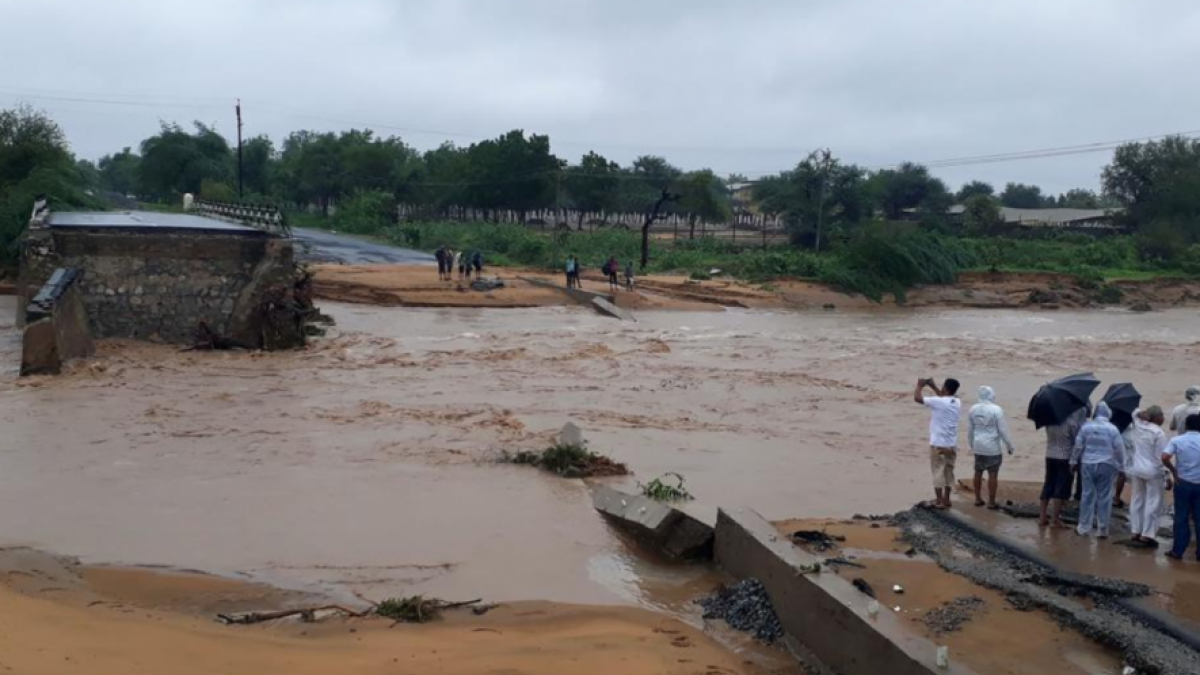Rain fury devastates J&K: 34 dead, Vaishno Devi Yatra halted as Jhelum breaches danger mark
By Administrator | National | 27-Aug-2025 16:04:18

News Story
Jammu and Kashmir is reeling under one of its worst rain disasters in
decades, with torrential downpours unleashing landslides, flash floods, and
widespread destruction across the Union Territory. At least 34 pilgrims lost their lives after a
massive landslide struck the Mata Vaishno Devi Yatra track near Ardhkumari in
Katra on August 27, forcing a suspension of the holy pilgrimage and triggering
a large-scale rescue mission.
The tragedy has deepened an already dire
situation, as rain-lashed districts struggle with collapsed bridges, snapped
power lines, and paralysed communication networks. Authorities fear the death
toll could rise further, with several still believed to be trapped under
debris.
Rainfall
records shattered
The intensity of the deluge broke decades-old
records. Jammu recorded 296 mm of rain in
just 24 hours, surpassing its previous all-time high of 272.6 mm set
in 1973. Udhampur fared even worse, with 629.4
mm of rainfall, nearly double its previous record from 2019. The
cloudbursts triggered multiple landslides, including another on Tuesday that
killed nine and injured 21 near the shrine route.
Jhelum
crosses danger mark, evacuation in full swing
The Jhelum River has risen beyond the 22-foot danger level near Sangam,
prompting flood alerts across South Kashmir. Over 3,500 residents have already been evacuated, with joint
teams of the Army, NDRF, SDRF, police, and local volunteers working
round-the-clock to move families from inundated villages.
Officials said 20–30 localities in Jammu and Samba districts are submerged,
while distress calls continue to pour into control centres. IAF aircraft
including C-130s and IL-76s have
been mobilised to carry in relief material, with Chinook and Mi-17 helicopters on standby at bases in
Jammu, Srinagar, Udhampur, and Pathankot.
Communication
blackout, transport crippled
Telecom services collapsed across large
swathes of the Union Territory, leaving millions cut off. Former Chief Minister
Omar Abdullah said he was struggling with “non-existent communication,” noting
even fixed-line internet and WiFi had broken down.
Transport was equally hit. 22 trains were cancelled and 27 short-terminated,
while flight operations at Leh were suspended before partial resumption at
Jammu Airport by afternoon. Earlier, several airlines had issued advisories
warning passengers of delays.
Schools
shut, exams suspended
With heavy rain forecast to persist, all
schools in Jammu division have been ordered shut till August 28. The J&K
Board of School Education suspended Class 10 and 11 exams scheduled for
August 28.
Relief,
compensation announced
Lieutenant Governor Manoj Sinha chaired
high-level meetings to assess the crisis and directed officials to prioritise
restoring power, communication, and water supply in affected regions. He
visited injured pilgrims at the Mata Vaishno Devi Narayana Hospital and
announced compensation of ₹5 lakh from
the Shrine Board and ₹4 lakh from the Disaster Management Board for
families of the deceased.
As thunderclouds loom and rivers swell, the people of Jammu and Kashmir remain on edge—grappling with devastation, uncertain of what further havoc the skies may unleash.